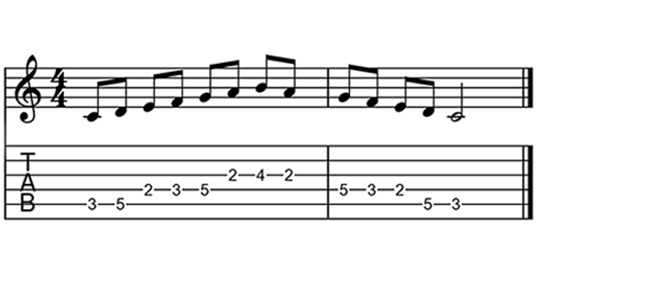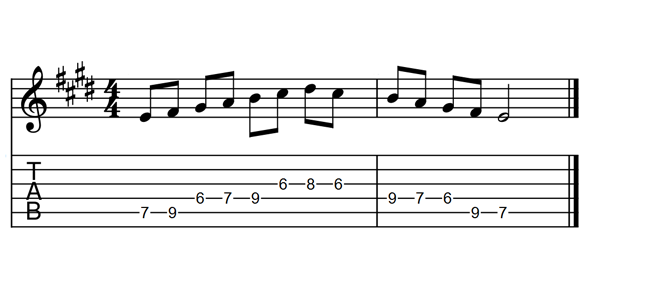The diatonic major scale is one of the most commonly used musical scales, and is constructed with seven notes.
We will refer to the C major scale, being the only one composed of seven natural notes (C, D, E, F, G, A, B), arranged according to a certain sequence of tones and semitones (T, T, S, T, T, T, S).

Below the technical data of the C major scale:
C (I) - Tonic
D (II) - Supertonic
E (III) - Mediant
F (IV) - Subdominant
G (V) - Dominant
A (VI) - Submediant
B (VII) - Leading tone
C (VIII) - Tonic (octave)
To obtain any other major scale different from the C major, it will be enough to apply the tones and semitones sequence starting from the chosen tonic note.

In the key of E major, the notes of the scale will then be: (E, F #, G #, A, B, C #, D #), so you will move the fingerings 3 tones above.

The structure of the major scale will be our reference point for determining the quality and degree of intervals in the chord progressions that we will see from now on.








